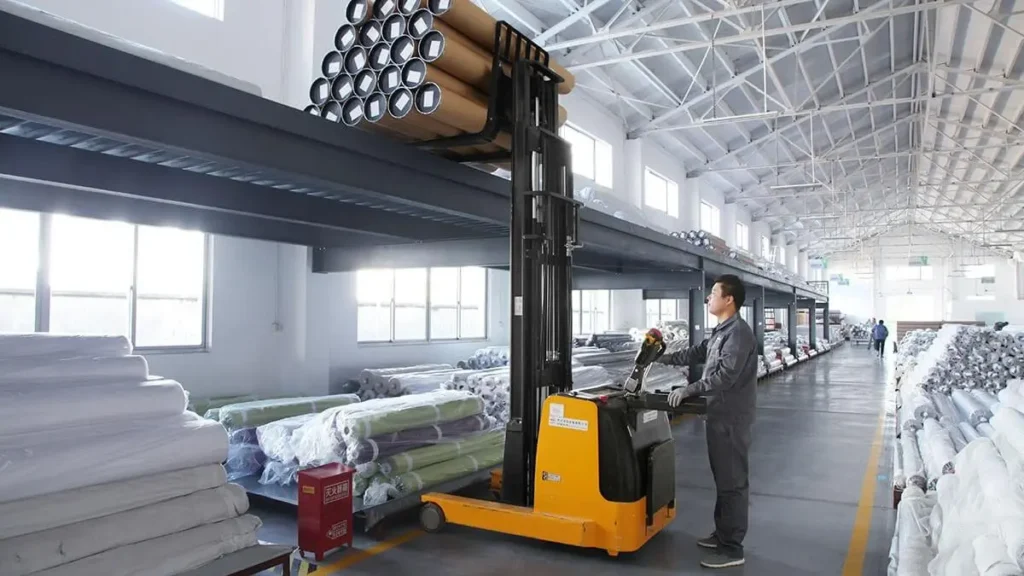The cost of automated blinds for businesses in 2025 changes a lot. Many things affect it, like the type of blind, the fabric, the motor, and how it is installed.
The cost of automated blinds for commercial projects in 2025 depends on blind type, fabric, motorization technology, power source, control integration, and installation. Shadesmart helps optimize budgeting by providing transparent pricing and expert consultation, ensuring clients maximize functional benefits and long-term operational savings.
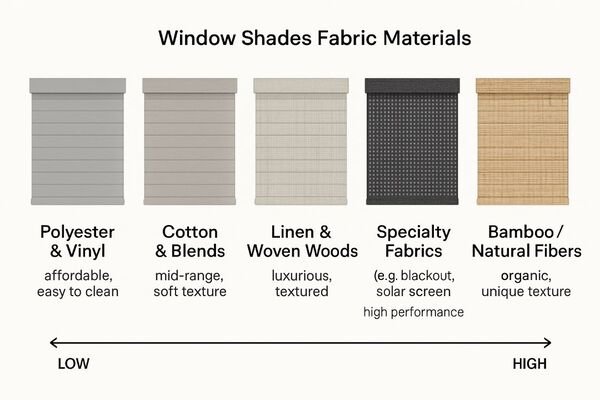
I know that the investment in automated blinds for commercial projects can seem daunting at first glance. It is not just about the upfront cost; it is about understanding the value and long-term benefits. This guide helps me explain the factors that influence pricing and how to make smart budgeting decisions.
What factors influence the total cost of automated window blinds for businesses?
Are you wondering what exactly makes automated blinds cost what they do for your business? Many different things add up to the final price.
The total cost of automated window blinds for businesses is influenced by the type of blind (roller, cellular, zebra), fabric choice (opacity, material, fire ratings), motorization technology (wired, battery, smart home compatibility), power source, control system complexity, installation difficulty, and project scale.
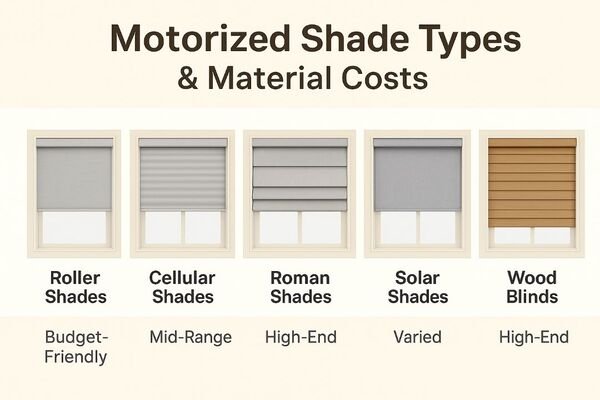
From my experience, the total cost of automated window blinds for a commercial project is a sum of several important components. First, the type of blind chosen plays a big role. Simple roller shades are often more affordable than complex cellular shades or large drapery systems needing specialized motors. The overall size of the window also directly affects the material and motor cost. Second, fabric choice is a significant factor. Performance fabrics, such as those that are fire-rated (NFPA 701, a must for commercial projects), antimicrobial, or highly energy-efficient, will increase the price. Also, premium textures, patterns, and colors can impact cost. Third, motorization technology is at the heart of the automation. Basic motors are cheaper than ultra-quiet, high-torque motors, or those with advanced feedback capabilities. Shadesmart offers a range of motor options. Fourth, the power source matters; battery-powered motors offer easier installation but require battery changes, while wired motors have a higher initial installation cost but offer continuous, reliable power. Fifth, the complexity of the control system heavily influences the price. Simple remote controls are budget-friendly. Integration with a building management system (BMS) or advanced smart home platforms like Control4 or Crestron, which offer centralized control and scheduling, adds to the cost but provides greater functionality and efficiency. Finally, installation difficulty, especially for very large windows, high ceilings, or complex wiring, will directly impact labor costs.
| Cost Factor | Description | Impact on Total Cost |
|---|---|---|
| Type of Blind | Roller, cellular, zebra, Venetian, drapery. | Simpler types (e.g., roller) are generally more affordable. |
| Fabric Choice | Material performance (fire-rated, energy-efficient), opacity, aesthetics. | Specialist and premium fabrics increase cost. |
| Motorization Technology | Basic vs. quiet, high-torque, smart, advanced features. | Advanced motors with more features raise the price. |
| Power Source | Battery (easier install, battery changes) vs. wired (complex install, continuous power). | Wired has higher initial installation cost. |
| Control System | Remote, wall switch, app, smart home integration (BMS, Control4, Crestron). | Sophisticated integration increases system cost. |
| Installation Difficulty | Window size, height, wiring complexity, site access. | More complex installations incur higher labor costs. |
| Project Scale | Number of blinds (bulk discounts possible). | Larger projects might get per-unit cost reductions. |
How do different motorization technologies impact price and performance?
Are you unsure how different motor options change both the price and how well automated blinds work? The technology inside matters a lot.
Different motorization technologies impact price and performance through power source (wired vs. battery), noise level (standard vs. whisper-quiet), control capabilities (basic remote vs. smart home integration), and durability, where higher-end motors generally offer superior performance, quieter operation, and greater longevity at a higher cost.
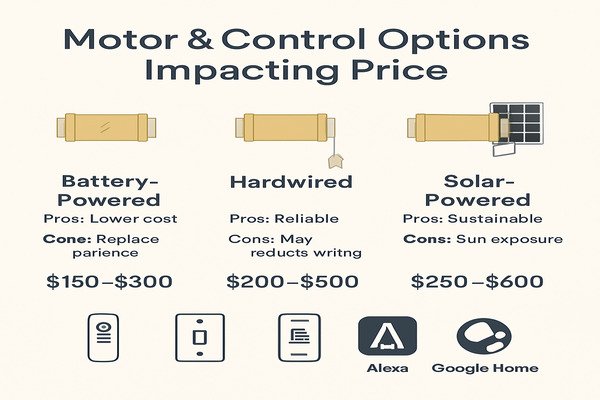
I know that making sense of different motorization technologies is key to understanding both the price and the long-term performance of automated blinds. First, the power source is a basic distinction. Battery-powered motors are often quicker and less expensive to install upfront because they do not require electrical wiring. However, they need periodic battery replacement (every 1-3 years, depending on usage), which adds a small ongoing maintenance cost and can be inconvenient for high or numerous windows. Wired motors (low-voltage or line-voltage) have a higher initial installation cost due to electrical work, but they offer continuous, reliable power without battery concerns. This makes them ideal for large-scale commercial projects. Second, noise level is a significant performance differentiator. Standard motors are functional but can be audible, which might be acceptable in high-traffic commercial areas but less desirable in quiet offices, hotel rooms, or healthcare facilities. Whisper-quiet motors, though more expensive, provide an almost silent operation, greatly enhancing comfort and luxury. Shadesmart offers a range of quiet motor options. Third, control capabilities directly impact price. Basic motors come with simple remote controls or wall switches. More advanced motors integrate seamlessly with sophisticated smart home systems (like Control4, Crestron, or Loxone) or Building Management Systems (BMS). This allows for centralized control, scheduling, energy optimization, and remote access, but comes with a higher price tag for both the motor and the integration components. Fourth, durability varies. Higher-quality motors, usually more expensive, are built with stronger components for greater longevity and consistent performance over years of operation, making them a better long-term investment.
| Motorization Technology | Description | Impact on Price | Impact on Performance |
|---|---|---|---|
| Battery-Powered Motors | Wireless, easy installation, periodic battery replacement. | Lower initial installation cost. | Convenience, but require battery changes (maintenance factor). |
| Wired Motors | Requires electrical wiring, continuous power supply. | Higher initial installation cost for wiring. | Reliable, continuous operation, no battery maintenance. |
| Standard Noise Motors | Functional, audible operation. | More budget-friendly. | Acceptable in some commercial areas, noticeable in quiet zones. |
| Whisper-Quiet Motors | Almost silent operation. | Higher cost. | Enhances comfort and luxury, ideal for hospitality/offices. |
| Basic Control Motors | Compatible with simple remote controls or wall switches. | Lower system cost. | Basic manual control. |
| Smart Integration Motors | Designed for integration with BMS, smart home systems (e.g., Crestron, Control4). | Higher cost for motor and integration components. | Centralized control, scheduling, energy optimization, remote access. |
| Durability (Internal) | Quality of internal components, expected lifespan. | Higher quality usually means higher price. | Greater longevity, consistent performance, reduced failure rates. |
What are the potential ROI and long-term savings of investing in automated shading?
Are you wondering if spending more on automated shades now will actually save your business money later? Yes, there are many benefits.
Investing in automated shading offers significant ROI and long-term savings through enhanced energy efficiency (reduced HVAC costs), improved occupant comfort and productivity, extended lifespan of interior furnishings (UV protection), increased property value, and reduced operational maintenance from manual blind adjustments.
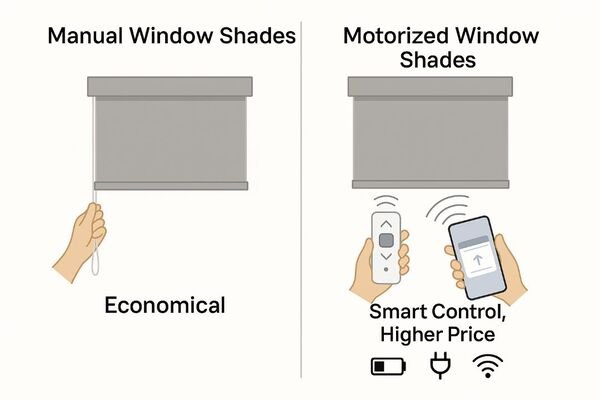
I know that while the upfront cost of automated shading can be higher, the potential return on investment (ROI) and long-term savings are compelling for commercial projects. First, enhanced energy efficiency is a major driver. Automated blinds can be programmed to respond to sunlight, automatically lowering to block heat gain in summer and raising to allow passive solar heating in winter. This proactive management significantly reduces HVAC usage and associated energy bills. For instance, in a large office building, this can translate into substantial savings over years, sometimes offsetting the initial investment. Shadesmart's solutions are designed with energy efficiency in mind. Second, improved occupant comfort and productivity are invaluable. Automated blinds eliminate glare, optimize natural light, and help maintain a consistent room temperature. This creates a more pleasant working or living environment, leading to fewer complaints, increased employee satisfaction, and potentially higher productivity. Third, automated shading extends the lifespan of interior furnishings. By automatically blocking harmful UV rays, carpets, furniture, and artwork are protected from fading and degradation, reducing replacement costs over time. Fourth, investing in automated shades increases property value. They are seen as a modern amenity, enhancing the appeal and market value of the commercial space. Finally, there is a reduction in operational maintenance. Manual adjustment of numerous blinds in a large building is time-consuming. Automation eliminates this repetitive task, freeing up staff and resources. While the payback period varies by project, these collective savings and benefits clearly demonstrate a strong ROI for smart shading solutions.
| Benefit Category | Description | ROI & Long-Term Savings Justification |
|---|---|---|
| Energy Efficiency | Automatic optimization of natural light and heat gain/loss. | Significant reduction in heating and cooling costs (HVAC). |
| Occupant Comfort & Productivity | Glare control, optimized daylighting, temperature regulation. | Fewer complaints, higher employee satisfaction, increased output. |
| Asset Protection | Blocking harmful UV rays to prevent fading of furnishings, artwork, and flooring. | Extended lifespan of interiors, reduced replacement costs. |
| Increased Property Value | Modern amenity, enhances building appeal, contributes to 'smart' building status. | Higher rental yields, improved resale value. |
| Reduced Operational Costs | Eliminates manual adjustment by staff across numerous windows. | Saves labor costs, frees up staff for other tasks. |
| Compliance & WELL/LEED | Helps achieve certifications by contributing to energy and wellness goals. | Demonstrates commitment to sustainability, attracts tenants. |
How does Shadesmart help optimize budgeting for smart shading solutions?
Are you trying to get the best smart shades for your budget without overspending? Shadesmart can guide you through it.
Shadesmart helps optimize budgeting for smart shading solutions by providing transparent pricing, expert consultation on cost-benefit analysis, scalable customization options, value engineering suggestions, competitive wholesale pricing, and long-term support for durable, high-ROI products.
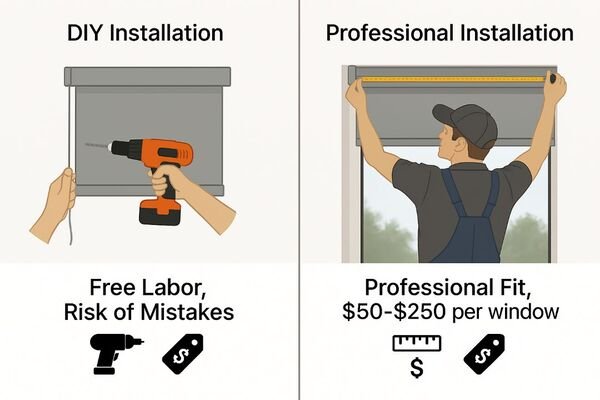
I know that optimizing a budget for smart shading solutions is a common challenge for my B2B clients, and Shadesmart is designed to make this process easier and more effective. First, we provide transparent pricing. This means breaking down costs clearly, so clients understand exactly what they're paying for, from fabric to motor to controls. No hidden fees or surprises. Second, we offer expert consultation that includes a thorough cost-benefit analysis. Our team helps clients weigh the initial investment against the long-term ROI in terms of energy savings, comfort, and operational efficiency. We help them see how quality pays off over time. Third, Shadesmart offers scalable customization options. If a project has budget constraints, we can suggest areas where more premium features might be essential (e.g., quiet motors in hotel rooms) and where more basic, but still high-quality, options suffice (e.g., standard motors in back-office areas). This allows for strategic allocation of funds. Fourth, we provide value engineering suggestions. This involves identifying alternative materials or system configurations that achieve similar performance and aesthetic goals at a lower cost, without compromising quality. Fifth, as a wholesale provider, Shadesmart naturally offers competitive wholesale pricing structures specifically designed for bulk commercial orders, maximizing value per unit. Finally, our commitment to using durable, high-quality materials and robust motor systems means our products have a longer lifespan, reducing future replacement costs and ensuring a higher overall ROI for the client. We focus on delivering sustainable value.
| Shadesmart's Budget Optimization Strategy | Description | Direct Benefit for Our Partners |
|---|---|---|
| Transparent Pricing | Clear breakdown of all costs (fabric, motor, controls, installation). | No hidden fees, helps create accurate project budgets. |
| Expert Cost-Benefit Consultation | Guidance on weighing initial investment vs. long-term ROI (energy, comfort, etc.). | Justifies expenditure, demonstrates long-term value. |
| Scalable Customization Options | Recommending premium features where essential and basic where appropriate. | Strategic allocation of budget, maximizes impact where needed. |
| Value Engineering Suggestions | Identifying cost-effective alternative materials or system configurations. | Achieves design/performance goals within budget. |
| Competitive Wholesale Pricing | Volume-based pricing structures for commercial and bulk orders. | Maximizes value per unit, improves project margins. |
| Durable, High-ROI Products | Focus on high-quality materials and robust motors for longevity. | Reduces future replacement costs, ensures strong long-term ROI. |
| Project Management Support | Dedicated project managers to oversee budget adherence and scope. | Keeps projects on track and within financial limits. |
Conclusion
The cost of automated blinds in 2025 is influenced by blind type, fabric, motorization, controls, and installation. Different motor technologies impact price and performance. Investing yields ROI through energy savings, comfort, and property value. Shadesmart optimizes budgeting with transparent pricing, expert consultation, and scalable, durable solutions.
